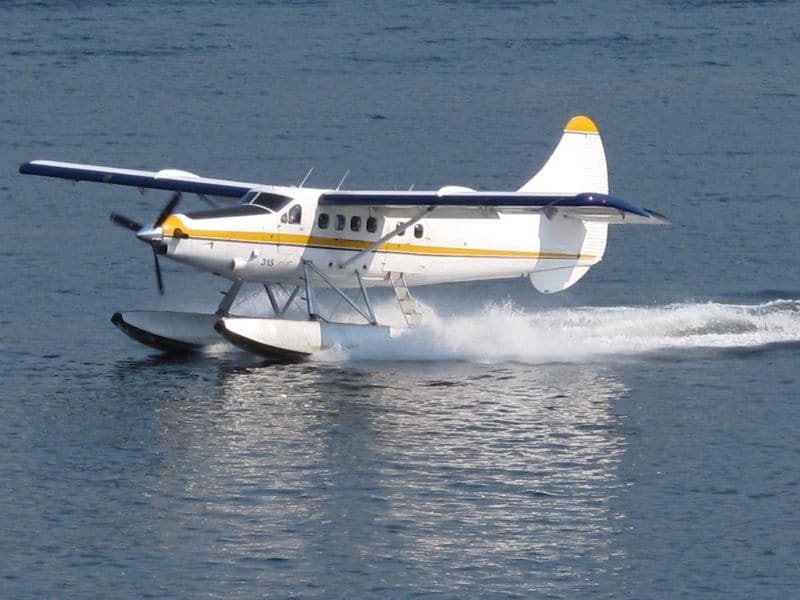Canada has the highest volume of seaplane operations in the world. The Transportation Safety Board of Canada (“TSB”) estimates that in the Vancouver Harbour alone, about 300,000 passengers travel on about 33,000 seaplane flights each year (see link). The Canadian Aviation Regulations (“CARs”) currently require that a personal floatation device (“PFD”) for each passenger be carried onboard the aircraft. However, occupants are not required to wear the PFD during the flight. Additionally, commercial seaplane pilots are not required to have underwater egress training, which teaches potentially life-saving strategies for exiting a submerged aircraft.
In November 2009, the pilot of a commercial seaplane initiated a left hand turn shortly after take-off from Saturna Island, British Columbia. During the turn, given the prevailing atmospheric conditions and bank angle, an aerodynamic stall resulted in the left wing dropping and nose pitching down. The aircraft descended rapidly and collided with the water, causing the floats to collapse.
Following the accident, the TSB investigated the loss and made two safety recommendations. First, the TSB recommended that the Department of Transport require all new and existing commercial seaplanes be fitted with regular and emergency exits that allow rapid egress following a survivable collision with water. Second, the TSB recommended that the Department of Transport require that all occupants of commercial seaplanes wear a PFD prior to boarding and during operations on or above water.
On May 21, 2016, Transport Canada published proposed changes to the CARs in response to the TSB recommendations. The proposed changes incorporate the PFD requirement, and state that the PFD may be “worn” in a pouch that is attached to the person’s waist. However, the recommendation regarding modification of aircraft exits was not included, because a stakeholder focus group found that such measures were not “presently viable.”
The proposed changes also include a new pilot training requirement. Commercial seaplane pilots are to undergo specific training (and recurrent training every three years) to facilitate underwater egress after an accident occurs, and to further mitigate the risks associated with exiting a seaplane following an accident into water. Operators are also subject to additional requirements depending on the nature of their operation.
Canada is the only country that has proposed the mandatory wearing of PFDs by seaplane passengers. The changes have raised valid criticisms in the industry, including concerns about premature/inadvertent inflation hampering timely escape, equipment durability and certification, discomfort, increased costs, and limited access to training for pilots stationed in remote areas. Time will tell whether these measures will increase the likelihood of survival following a seaplane accident over water.


